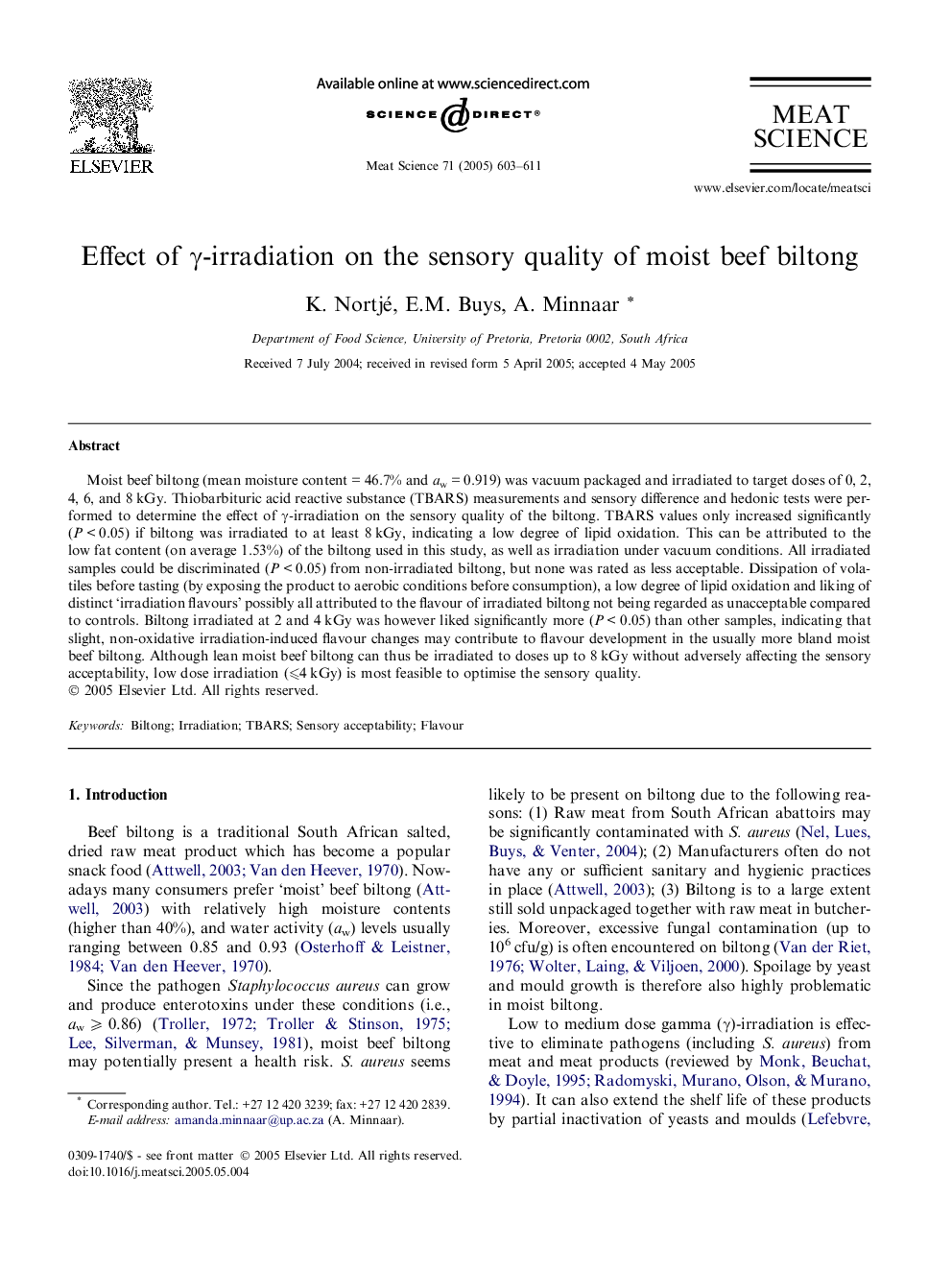| Article ID | Journal | Published Year | Pages | File Type |
|---|---|---|---|---|
| 8983559 | Meat Science | 2005 | 9 Pages |
Abstract
Moist beef biltong (mean moisture content = 46.7% and aw = 0.919) was vacuum packaged and irradiated to target doses of 0, 2, 4, 6, and 8 kGy. Thiobarbituric acid reactive substance (TBARS) measurements and sensory difference and hedonic tests were performed to determine the effect of γ-irradiation on the sensory quality of the biltong. TBARS values only increased significantly (P < 0.05) if biltong was irradiated to at least 8 kGy, indicating a low degree of lipid oxidation. This can be attributed to the low fat content (on average 1.53%) of the biltong used in this study, as well as irradiation under vacuum conditions. All irradiated samples could be discriminated (P < 0.05) from non-irradiated biltong, but none was rated as less acceptable. Dissipation of volatiles before tasting (by exposing the product to aerobic conditions before consumption), a low degree of lipid oxidation and liking of distinct 'irradiation flavours' possibly all attributed to the flavour of irradiated biltong not being regarded as unacceptable compared to controls. Biltong irradiated at 2 and 4 kGy was however liked significantly more (P < 0.05) than other samples, indicating that slight, non-oxidative irradiation-induced flavour changes may contribute to flavour development in the usually more bland moist beef biltong. Although lean moist beef biltong can thus be irradiated to doses up to 8 kGy without adversely affecting the sensory acceptability, low dose irradiation (⩽4 kGy) is most feasible to optimise the sensory quality.
Related Topics
Life Sciences
Agricultural and Biological Sciences
Food Science
Authors
K. Nortjé, E.M. Buys, A. Minnaar,
